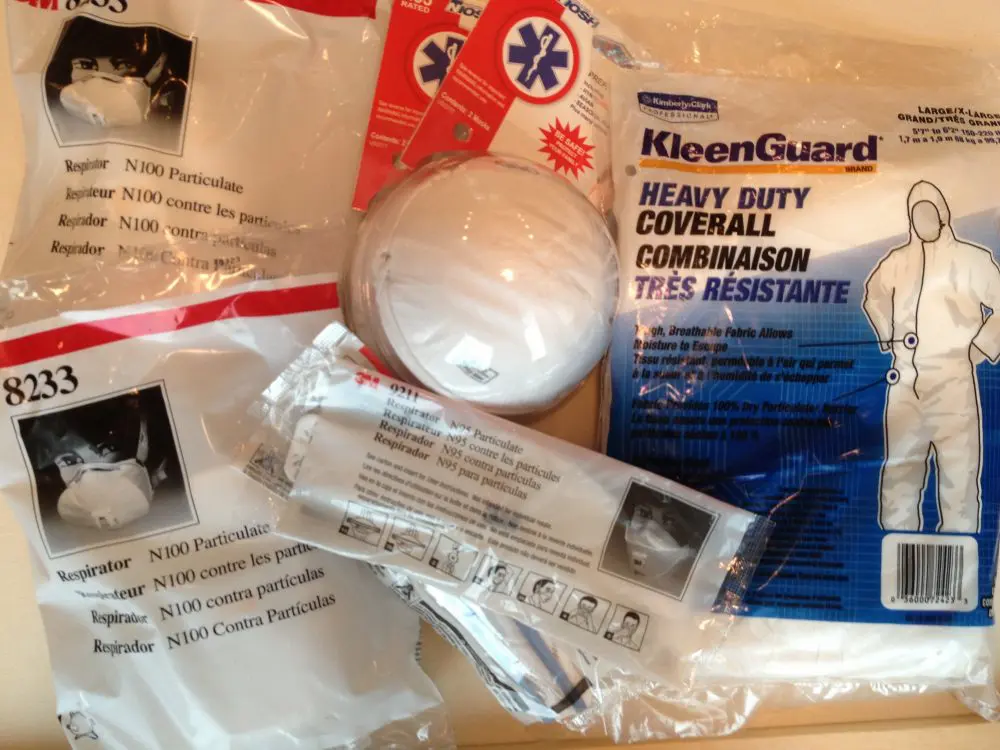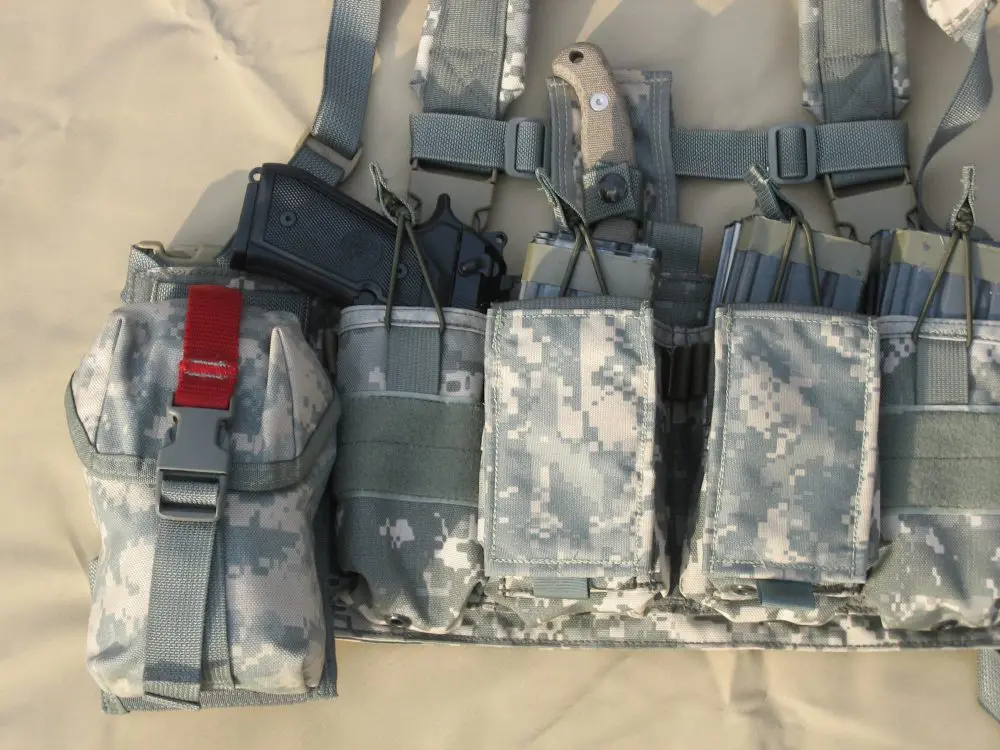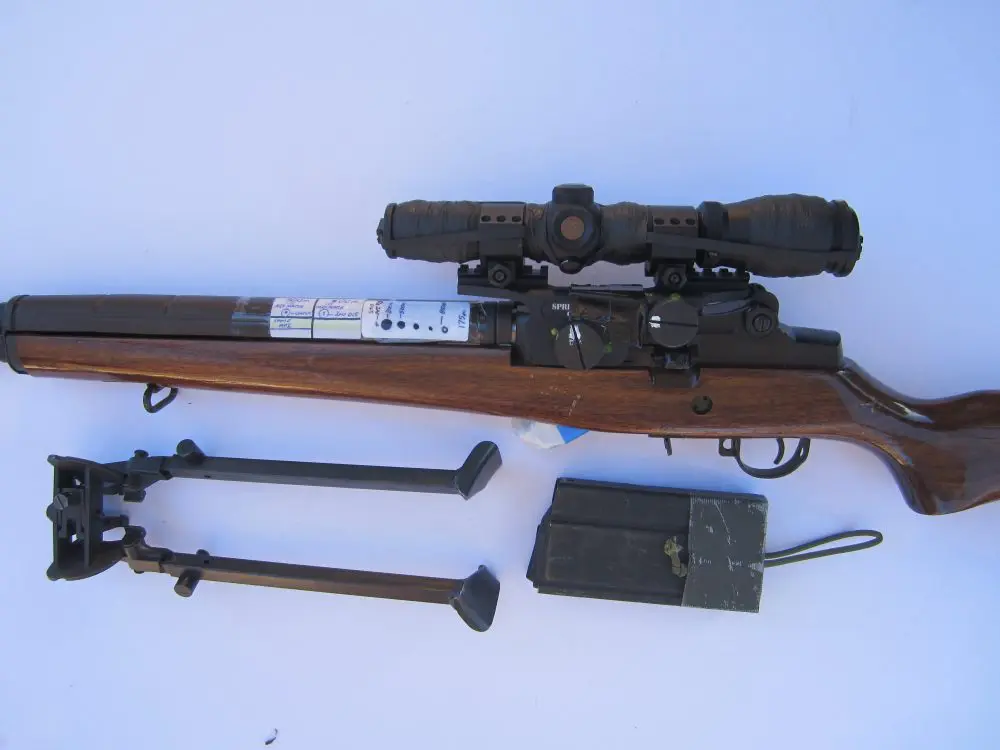

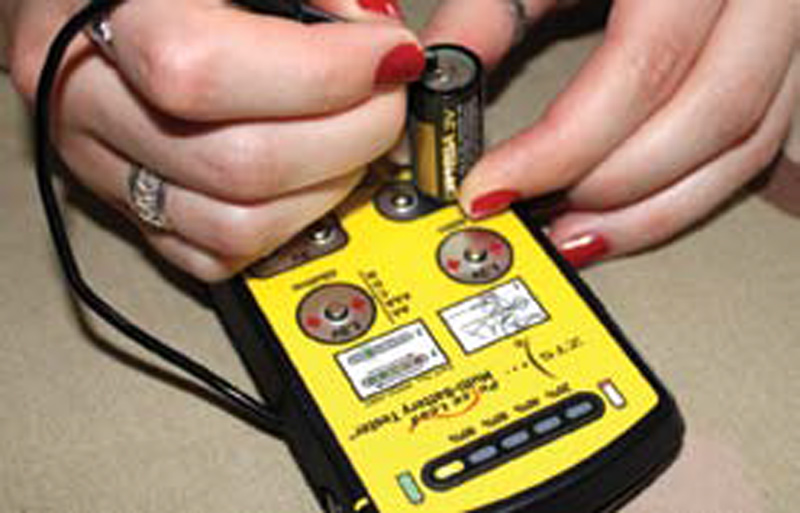
The sun spilled over the berm and flooded the tube of my Aimpoint CompM, washing out my red dot. No problem. Just crank up the intensity.
Still no red dot.
How could my battery be dead? Hadn’t I replaced it just last week? There was no way I could have run it for the rated 100 hours on high power.
Sensing my distress, E.A.G.’s chief instructor Pat Rogers politely inquired as to my difficulty. I informed him that I could not see the red dot. “Deal with it!” he counseled. So I erected my KAC 300m BUIS and completed the exercise.
When the command to “Hydrate, urinate and jam mags!” was issued, I installed a new Duracell DL1/3. As if by magic, the red dot reappeared. My battery had indeed died on the line.
Table of Contents
NOT ALL INTERNET POSTS ARE EVIL
During the lunch break, Pat reminded me of an online post he had made dealing with what he called “battery phobia”:
“The Aimpoint M2 has a 10,000 hour battery life on medium setting, and 1000 hours on high setting. The fact of the matter is that battery phobia (I made this term up) is (should be) a thing of the past. The Marine Corps First Force Reconnaissance Company have been using Aimpoints for a long time—way back to the 3000 model, and they have been really happy with them.
“The Aimpoint XD was purchased (out of pocket) to replace the ineffective issue Reflex Sights. They worked exceptionally well for each of the deploying platoons. They jumped them, swam them, dived them, and put approximately 15,000 rounds through the M4A1s with the optic mounted.
“We are just replacing the XDs with the M2 (the XD had a high battery life of 250 hours and medium of 1,000 hours).
“They run the optic significantly harder than cops or civilians normally do. We have had no problems with battery life. The batteries are replaced on a regular basis, or when going on a hit.
“The concern about a battery going dead just isn’t valid. We have batteries in our vehicles, A/C, radios, watches, GPS, strobe lights and just about everything else we use.
“We plan for extra batteries and replace them at regular intervals. And if it goes TU during CQB, we train to use the rear of the optic as a (really big) ghost ring. If it happens at CRE [Close Range Engagement] distance, then we flip up the Back Up Iron Sight (BUIS).”

BATTERY CHANGING AS AN ANNUAL EVENT
Fast forward to E.A.G.’s June 2010 Shoot House Course. A very experienced shooter used an issued Aimpoint CompM. I asked his SOP for dealing with the short battery life of his RDS. “Change it when it dies.” He was serious. The batteries on his Sordin earpro died during class. The shooter asked Pat if he had any spares. I gave him two AAAs to save Pat’s reserves—my small contribution to the War on Terror.
In the day of 50,000 to 80,000 hours of RDS battery life, replacing batteries “on a regular basis, or when going on a hit” means changing them annually and leaving them on, like the battery in a smoke detector, and possibly changing them before a class. Likewise, flashlight batteries are changed annually, when they get dim, or before a class.

Freddie Blish, retired Marine Lieutenant Colonel and formerly Aimpoint’s Director, Military Business Development, said:
“Regularly changing your batteries, like your oil, is never a bad idea. However, most trucking companies and the military take oil samples to determine whether the oil needs changing vice changing based on miles or hours used. This is a more cost-effective and efficient, as well as more accurate, means of engine maintenance. The same can be said for batteries with regard to when you can notice the light or red dot dimming.”
If oil can be sampled to determine if it should be changed, might testing the power level or state of charge of batteries yield better results than noting the dimming of the light or red dot? A search on www.candlepowerforums.com yielded rave reviews for battery testers made by a Cincinnati, Ohio manufacturer. ZTS, Inc., a family-owned corporation, has been designing and manufacturing electronic test equipment since 1976. Today its primary business is battery testers.
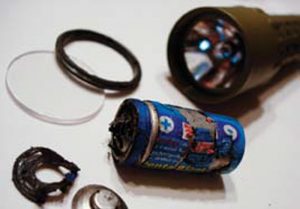
TESTING THE BATTERY TESTERS
I purchased one ZTS Mini Multi-Battery Tester™ (Mini-MBT) and one ZTS Multi-Battery Tester™ (MBT-1) for evaluation.
The pocket-sized Mini-MBT (4×2.5×0.75 inches; approximately 3 ounces) is powered by four AAA batteries and tests 1.2v NiMH/NiCd rechargeable (AA, AAA, C, D), 1.5v alkaline (AA, AAA, C, D, N), 3v photo lithium (CR123, CR2, CRV3), 9v alkaline, and carbon zinc.
The MBT-1 (8×4.5×1.25 inches; approximately 14.5 ounces) is powered by four AA batteries and tests all of the above batteries as well as 1.5v lithium (AA L91, AAA L92) and 3v lithium coin (CR2032, CR1/3N), among others.
Both microprocessor-controlled instruments are designed to test popular primary (non-rechargeable) and rechargeable batteries using a patented high-accuracy pulse load test. After a fully automatic test cycle, percentage of remaining battery capacity is indicated on the LED bar display. Battery types are clearly labeled next to appropriate contacts. A negative test lead/probe conveniently stores in a seam on the side. Test results, i.e. percentage of full charge, are easy to understand.
ZTS SAYS …
From www.ztsinc.com/mbt1.html:
“A ‘load’ refers to a current drain that is applied to a battery. For example, charging the flash in a camera. We use the term ‘Pulse Load’ to indicate that the load is automatically applied for a specific period of time, then disconnected without user intervention. This method enables testing of the battery under relatively large loads without draining or damaging the battery. The duration and magnitude of the Pulse Load varies depending on battery type, and may be single or multiple during the test cycle.
“Voltmeters and conventional battery testers do not sufficiently load the battery under test. ZTS Multi-Battery Testers ™ provide a fully automatic pulse load test to determine state of charge (SOC) or state of power. The pulse load creates real power demand and measures battery performance under load, not just voltage or internal resistance.”
These simple-to-operate testers quickly and easily identify weak batteries, rapidly yield test results and are ideal for battery management and cell power matching. With proper usage, costs of operation can be reduced and reliability of Aimpoints, EOTechs, Sordin earpro, SureFire flashlights, and Crimson Trace lasers, among others, can be increased. All this for just over $100.00 (both units).
PERCENTAGES
In April 2009, my first out-of-the-box test was the state of charge of five sleeves of ten Duracell 123s with an expiration date of 2008. Results: 20% (5); 40% (3); 60% (6); 80% (3); and 100% (33). Twothirds of these ten-year-old batteries, which I would have otherwise recycled as beyond their expiration date, were as good as new. Money not spent is money saved.
All batteries are not alike. For some very good advice, check SureFire’s Frequently Asked Questions page.
My next project was to test the batteries in all the lights in the armory. Good news: None of the batteries would void the SureFire warranty. Bad news: In one 9v M972, I had two SureFire 123 batteries at 20% and one Panasonic 123 battery at 100%. In another M972, two SureFire 123 batteries, expiration date 2012, measured 40% and another SureFire 123 battery, expiration date 2016, measured 100%. Unmatched batteries, by manufacturer or date, frequently discharge at different rates.
FIRE DANGER
Louis Awerbuck commented during a Boone County Pistol I class in August 2009 that, on one occasion he felt heat in his trouser pocket where he carried two lithium 123 batteries along with his change. He now covers the battery terminals with electrical tape when he carries them in his pocket.
That same month, a Deputy U.S. Marshal from the southern district of New York exited his vehicle, heard a loud “POP” and noted that his trousers were burning. He slapped out the flames. Then he noted a second “POP” and saw flames “like [a] blow torch” coming from the M6 light on his Glock 22. Although he escaped injury, his Glock, M6 light and holster were no longer serviceable.
SureFire used to have this warning on their site:
“SureFire recommends the use of only SureFire-brand 123A lithium batteries or those manufactured by Panasonic®, Energizer®, and Duracell®. However, do not use any batteries marked “Photo” or “Camera” in SureFire illumination tools.”
I asked SureFire Technical Support what effect use of photo or camera batteries has on SureFire illumination tools? They advised, “The reason is that photo/ camera 3-volt lithium batteries can be drawn from cameras differently than our flashlights.” Calling for clarification, I learned that different batteries work very differently in lights and cameras.
SureFire lithium batteries are made for tactical lights (low peak amps, maintain max voltage for as long as possible, with constant load and heat control), while photo or camera lithium 123 batteries are made for cameras (high peak amp draw while charging the flash, then low load and minimal heat issues). I no longer use photo or camera lithium 123s in flashlights.
TESTING AND RESEARCH DEFEAT BATTERY PHOBIA
For an E.A.G. Pistol II (with night shoot) and Carbine Operator Course in June 2009, I tested 16 flashlight batteries (six handheld and two weapon-mounted), five DL1/3s for Aimpoint M3s, and the CR2032 in a recently purchased T-1. Only two lithium 123s were below 80%. I spent $5 for new batteries rather than $70 for replacing them all.
Buying quality batteries is a matter of doing some research. Until I acquired the ZTS battery testers, it made no sense to pay money for good training and quality ammo without installing new batteries in red dot sights, lights and earpro. Just to be sure. As more of my clan began to train, however, the cost of this procedure rapidly mounted. With the ZTS testers and better battery management techniques, we are still sure that our tools will work, but at a much lower cost. I highly recommend them.

